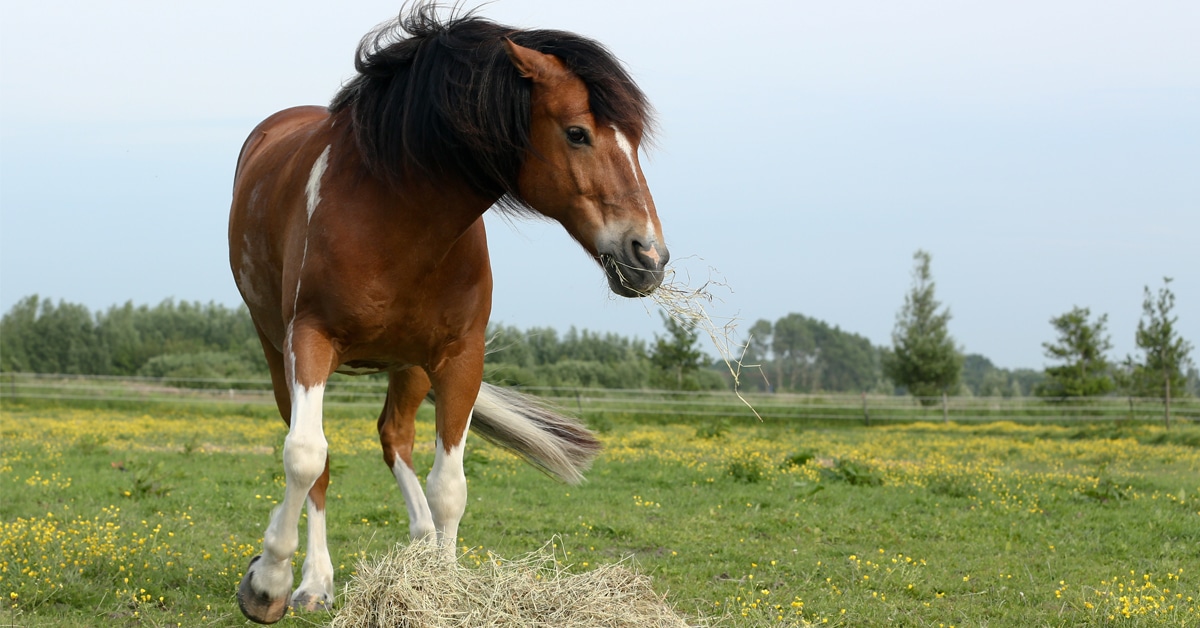While there is plenty of debate in scientific circles as to whether climate change is the result of human activity or just part of the ongoing natural cycle of warming and cooling of the Earth, there is little doubt that our terrestrial climate is changing.
Climate models show that Canada’s agricultural regions will likely see drier summers from coast to coast, but increased winter and spring precipitation. This means that farmers may have to deal with both too much water during the seeding season and too little water during the growing season, all in the same year. Projections also show that although much of southern Canada will be drier overall in the summer, it could also face an increase in short-lived but very intense rainfall events. In addition to the increased threat of drought and flooding, wet springs and autumns may make it challenging for farmers to take advantage of the longer growing season promised by rising temperatures. Early or late rain can simply make the land too wet to support farm machinery, and can hinder important seeding, maturing or drying phases of many crops.
Canada’s prairie provinces have experienced the consequences of such seasonal shifts in precipitation: in 2016 a hot, dry spring caused widespread drought. This extended dry weather was followed by torrential rains in the late summer that caused flooding in many areas, from northern Alberta to eastern Manitoba. And, in 2017, southern Saskatchewan experienced the driest July in over 130 years of record-keeping. For farmers in the region, the heat and dryness was especially damaging because it followed a rainy spring that had been so wet that they’d been unable to properly seed their fields.
The result for horse owners is skyrocketing hay and grain prices. As reported in the Western Producer in May 2019, hay prices continued to rise across the prairies as conditions remained too dry to produce a first cut leaving some horse owners with dwindling winter forage they could not afford to replace if they were even able to find a supplier. In April, Canada’s Drought Monitor reported abnormally dry conditions stretching from Edmonton to Winnipeg, with pockets of moderate-to-severe drought conditions located across the prairies. Farmers are used to planning for uncertainty, but climate change is bringing new extremes, seasonal shifts, and increased variability that are likely to push the boundaries of our climate beyond anything they are used to managing.
Another area of concern is forest fires encroaching into farmland and even towns and cities. According to Natural Resources Canada, “climate change during the 21st century is expected to result in more frequent fires in many boreal forests, with severe environmental and economic consequences. From global climate models and scenarios, researchers are interpreting how climate change and climate variability may alter patterns of lightning, fuel moisture, temperature, precipitation and vegetation – all factors that can affect fire occurrence. Fire-prone conditions are predicted to increase across Canada. This could potentially result in a doubling of the amount of area burned by the end of this century, compared with amounts burned in recent decades.” Emergency preparedness is
of greater importance than ever.
With average temperatures rising almost two degrees Fahrenheit since the early twentieth century, and an increase of atmospheric carbon dioxide and methane levels, our planet’s climate is undoubtedly trending warmer. This evolution is becoming a cause for concern for horse breeders and owners looking ahead over the next few decades. Hay shortages, forest fires and market uncertainty may be the immediate concerns, but a look to the future shows that horse ownership will include a number of additional, if more subtle, challenges.
CLIMATE CHANGE VS. GLOBAL WARMING
According to NASA, global warming is the long-term rise in recorded surface temperatures with the first noted spike in global temperatures being recorded between 1750 and 1880, then another large increase beginning in the late 1970s and continuing to today. While two degrees of temperature differential may not seem like much, there are far-reaching consequences when average global temperatures rise in the slightest.
Climate change encompasses global warming, but takes into account other factors such as sea level changes, the size of the polar ice caps, the shrinking of mountain glaciers, and other meteorological and atmospheric composition benchmarks.
While global warming and climate change are sometimes used in tandem, there is a difference, with global warming being merely one aspect of climate change as a whole.
Challenges of Heat and Cold for Horse Ownership
All living organisms must adapt to their environment, and horses are no different. The two biggest threats to breeding and keeping horses healthy and well-cared-for in the face of climate change shifting toward warmer global temperatures are the increase of susceptibility to infectious disease and complications of reproduction due to environmental factors.
With temperatures trending higher, seasonal climate patterns include summers that are hotter, winters that are actually colder, an increase in severity of storms which can cause floods, tornadoes and hurricanes and, inversely, longer periods of droughts in certain geographic locations.
Horses can become overheated or suffer heat exhaustion-related illnesses during times of very warm temperatures. The need for more water and shade becomes evident in hot summer months, and the availability of good-quality fresh forage may be compromised in times of drought.
The colder winters associated with this type of climate change necessitate adequate shelter for longer periods of time, which negates any natural foraging and renders a horse’s diet completely dependent on human provision. A high-calorie, high-fibre diet in cold months is crucial to keep an adequate body temperature.
More severe storms can bring massive floods, and with it water-related problems, from life-threatening river surges to muddy pastures that can cause hoof problems and the presence of insects, which can be carriers of infectious disease.
A Hotbed of Equine Disease
In a 2006 presentation at the 17th International Conference of Racing Analysts and Veterinarians, held in Antalya, Turkey, noted microbiologist Gary Muscatello, Ph.D., BVSc, of the University of Sydney Faculty of Veterinary Science stated, “The general principles of a warmer environment and changing weather patterns influence many factors, which encourage disease outbreaks, disease transmission, and the emergence of new diseases.”
Muscatello went further to state that “the disease-causing pathogens themselves replicate at a higher rate, and subsequently can potentially generate more virulent, novel strains,” which would in turn cause newer disease outbreaks.
In a 2009 Cambridge University study by Dr. Paul Gale et al., climate change was “predicted to increase the risk of incursion from entry of vectors for … viruses to some degree, the strongest effects being predicted for African Horse Sickness Virus (AHSV), Crimean-Congo Hemorrhagic Fever Virus (CCHFV), and West Nile Virus (WNV).”
African Horse Sickness Virus causes circulatory and respiratory lesions, and is insect-borne. Culicoides midges, a type of fly, carry and can transmit AHSV by biting horses. They have also been known to transmit Bluetongue virus, another potential disease endemic for the horse population of sub-Saharan Africa.
Mortality rates of AHSV can be as high as 90% depending on the strain, and full recovery from acute illness caused by the virus is rare. Laboratory testing is the only sure method of diagnosing AHSV, but respiratory symptoms include cardiovascular edema, interlobular edema, spasmodic coughing, and fever. There is, however, a vaccine for the disease.
Crimean-Congo Hemorrhagic Fever Virus is a tick-borne virus most notably found in eastern Europe, the Mediterranean region, central Asia, the Middle East, northern Africa and the Indian subcontinent. CCHFV is asymptomatic in the equine, but infected horses can act as an “amplifying host” and pass the stronger strain of virus to humans through tick bites, mainly from ticks of the genus Hyalomma. The fatality rate in humans infected with CCHFV
can be as high as 40%.
West Nile Virus is endemic to North America. While infection must be clinically verified in the laboratory, equine symptoms include depression, ataxia, lameness, partial paralysis and other neurologic signs accompanying fever. Vaccination against WNV is the primary form of protection against the disease, but cases are still found at varying times of the year. In 2019 (as of September 14th), five horses have tested positive for WNV in British Columbia (1), Saskatchewan (1), Alberta (1), Ontario (1) and Quebec (1). Most cases are detected in the months of August and September, but “cases can occur into October if environmental conditions permit the survival of the mosquito vector species.”
The challenges of these and other types of climate change-induced illnesses are many and complex. Bacterial infections, breakdowns of pasture lands, water contamination, and severe drought all pose threats to horses in a rapidly-changing climate.
Pigeon Fever, for instance, is on the rise. Rarely seen prior to 2009, in 2011 following a historic drought in Texas, there were 40-50 cases in the fall. The corynebacterium, which lives in the soil, seems to rear its head once it rains after a prolonged drought and manure provides a food source for the organism.
Also in Texas in the fall of 2011, was a much higher instance of salmonella in adult horses than is usual for that time of year, again following the first significant rain after months of drought. In this case, it was unclear whether it was released in the soil or manure due to the rain, or arrived with all the hay being brought in from out-of-state during the drought.
Drought also seems to trigger an increase in rabies, a fatal neurological disease that is easily preventable with a regular vaccination. It is believed that the water shortage attracts wild animals who may be carriers to ponds and troughs in horses’ fields, thus exposing them.
Equine Reproduction Problems
Reproduction issues may also arise in conjunction with climate change. Onset of seasonal ovulation has been proven to be affected by changes in temperatures. A 10-year study concluded in 1994 by M.V. Guerin and X.J. Wang analyzed the time of onset of seasonal ovulation in mares and found a “significant variation” between years. They surmised that “environmental temperature may therefore play an important adjuvant zeitgeber [a cue given by the environment to reset the internal body clock] for the timing of the first ovulation of estrus in the mare.” Guerin and Wang also showed a “significant negative correlation between the mean weekly temperatures and the time of ovulation.”
Muscatello and fellow researcher Peter Knight found that “reduced rainfall may decrease pasture growth with resulting adverse effects on breeding activities.” Their study supported the findings of E.M. Carnevale in 1997 that “mares grazing pasture have been shown to begin ovulating sooner than those being fed hay.”
The ramifications of high temperatures ruining pasture land become abundantly clear: if there isn’t enough rain to support the pasture, and mares are hay-fed for long periods, their ovulation cycles will be delayed. When taking into consideration rigid breeding seasons for race horses, those dates may become compromised as mares will become fertile later than normal.
Maintaining vigilant animal husbandry in efforts to stay ahead of any possible complications brought upon by climate change is the best course of action. Water conservation, while providing ample amounts of clean water, is a must. Pasture management through rotation, reseeding and having a ‘sacrifice’ paddock during rainy weather becomes even more important to maintain healthy plant growth and longevity. Manure management should remain a priority to avoid ground water contamination and to help prevent a myriad of possible disease processes. Immunizations should be kept up to date, and regular veterinary check-ups should be afforded.
Understanding how current and future climate shifts can affect the health and safety of your horses will ensure you are prepared to keep them comfortable and secure in the ‘new normal’ of weather conditions.
This article is reprinted with updates from the August 2018 issue of Horse Sport magazine as a result of current events and new activism.
The Latest









